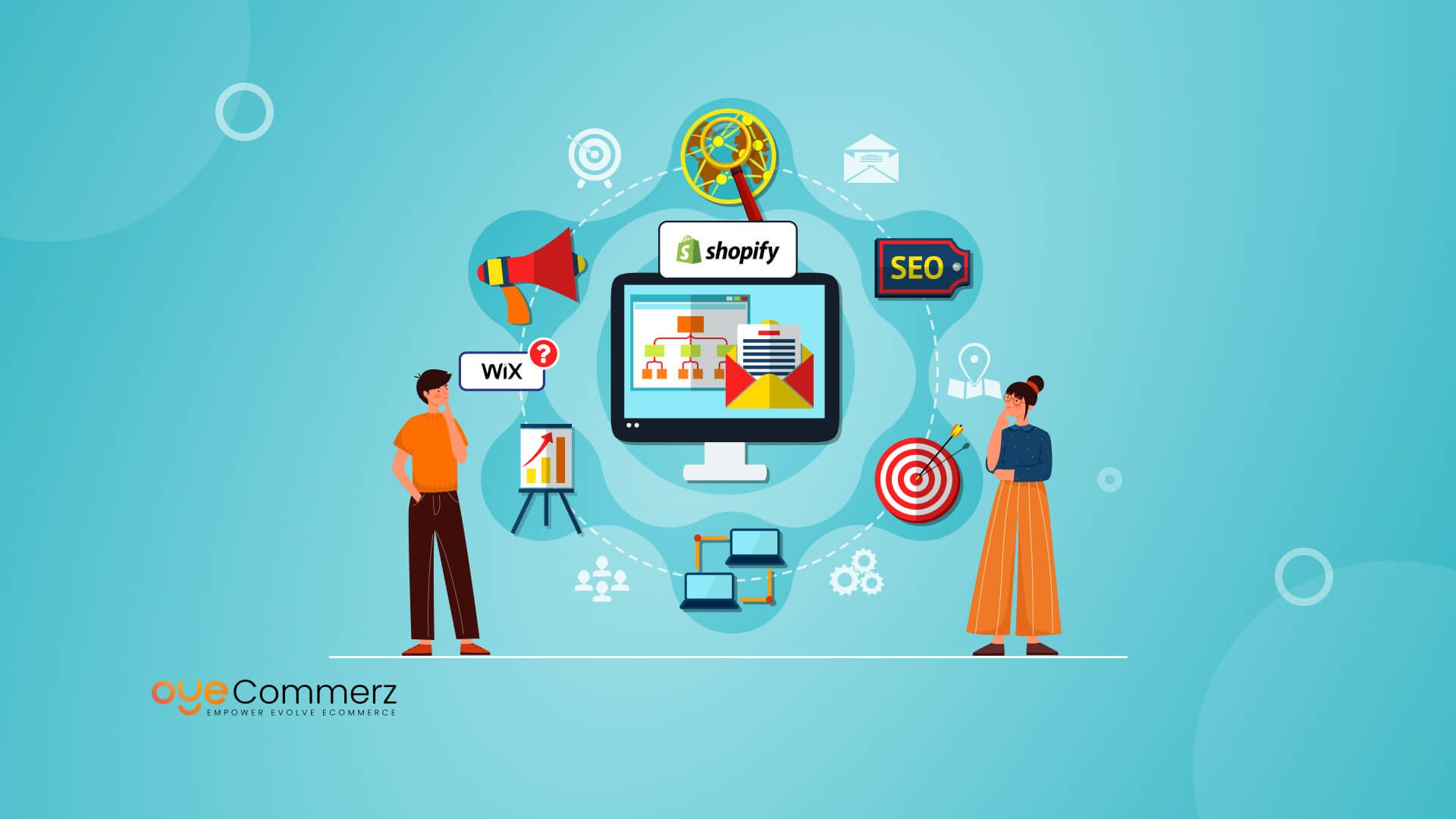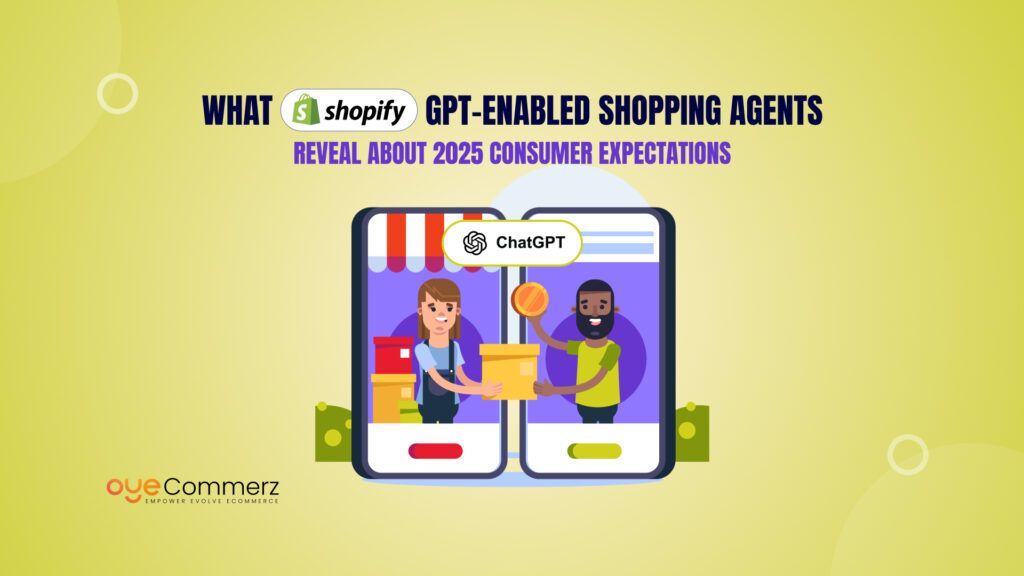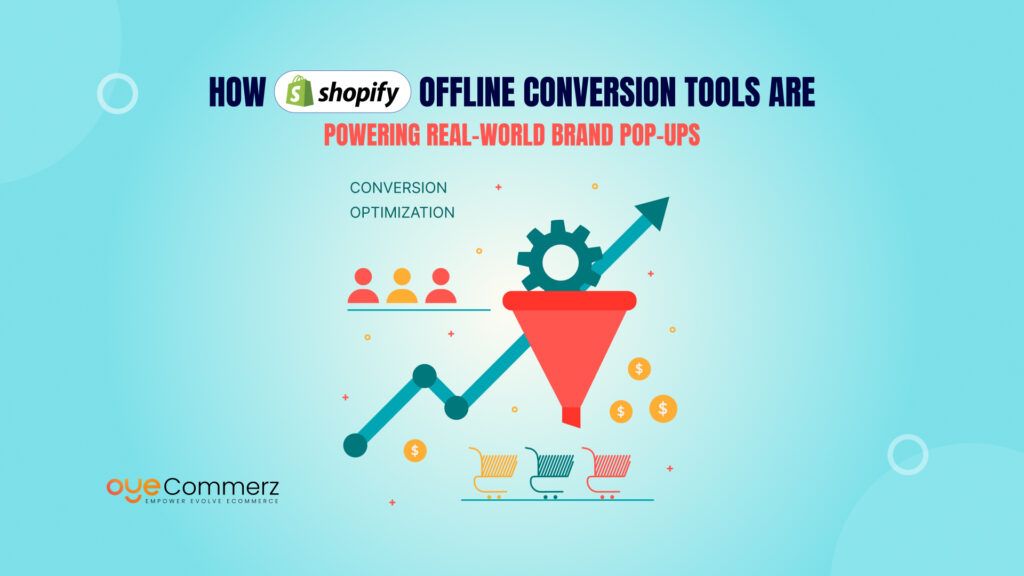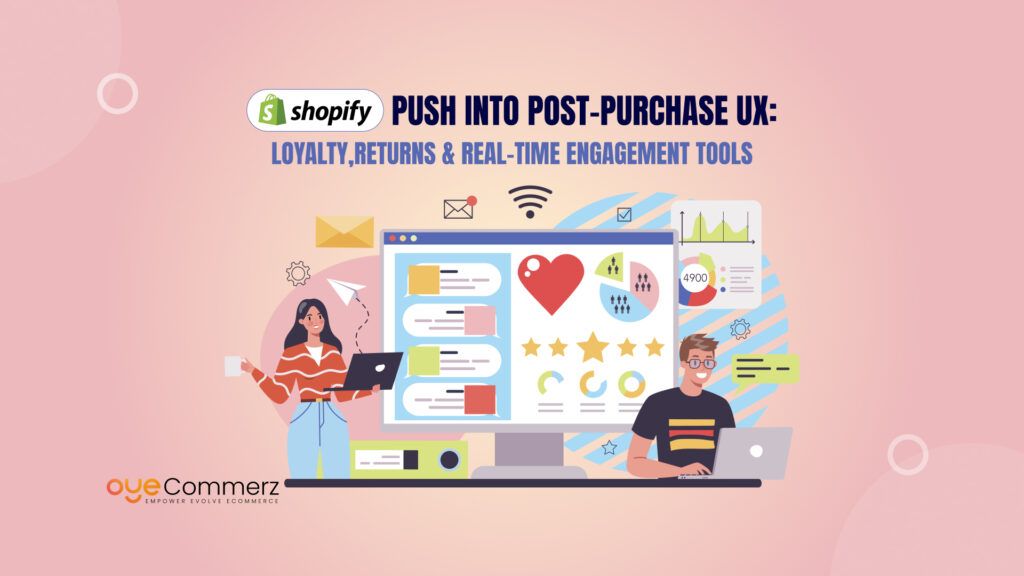Feeling stuck with Wix’s limited marketing tools? As a Wix user, you might face challenges like scaling campaigns, a lack of advanced automation, or tools that don’t grow with your business. These issues can make it hard to compete in a fast-moving market. When comparing Shopify marketing features vs Wix, Shopify offers a more powerful and scalable solution. With advanced automation, in-depth analytics, and seamless integrations, Shopify helps businesses save time and drive more revenue. Many who switch to Shopify report a 40% boost in efficiency. If you’re ready to overcome these challenges and unlock your business’s full potential, let’s explore why Shopify’s marketing suite might be the upgrade you’ve been searching for!
Table of Contents
ToggleWhat Are Marketing Tools?
Marketing tools are essential software and strategies that businesses use to attract, engage, and retain customers. These tools help streamline marketing efforts, improve efficiency, and boost sales and brand visibility. Marketing tools can be divided into two categories:
Basic Marketing Tools
- Email Marketing – Sending promotional emails to your audience.
- Social Media Posting – Scheduling and sharing content across platforms.
- SEO Optimization – Basic keyword strategies to improve search engine rankings.
- Analytics – Monitoring website traffic and basic performance metrics.
Advanced Marketing Tools
- Automation – Tools for personalized email campaigns, abandoned cart recovery, and dynamic customer journeys.
- Integration – Seamless connections with CRM systems, advertising platforms, and analytics tools.
- Multi-Channel Marketing – Managing campaigns across platforms like Facebook, Instagram, and Google Ads from a single dashboard.
- AI-Driven Insights – Using artificial intelligence to predict customer behavior and tailor recommendations.
- Upselling and Cross-Selling – Advanced techniques to increase order value.
Why US-Based Businesses Need More Than Basic Marketing Tools
For businesses operating in the highly competitive US market, basic marketing tools are simply not enough. Customers in this market demand personalization, fast responses, and seamless shopping experiences. Let’s explore why advanced tools like those offered by Shopify are essential.
Increased Competition
The US market is flooded with e-commerce businesses. To stand out, you need tools that allow you to:
- Create highly personalized campaigns.
- Leverage data-driven decision-making.
- Manage multi-channel sales seamlessly.
Evolving Consumer Expectations
Modern consumers expect tailored recommendations, fast-loading mobile experiences, and easy payment options. Shopify excels in providing tools that meet these expectations, whereas Wix often falls short.
Scalability Needs
As your business grows, basic tools may limit your ability to expand operations. Shopify’s scalable solutions, from inventory management to automated marketing, ensure you’re ready for growth.
Challenges Faced by Wix Users in Marketing
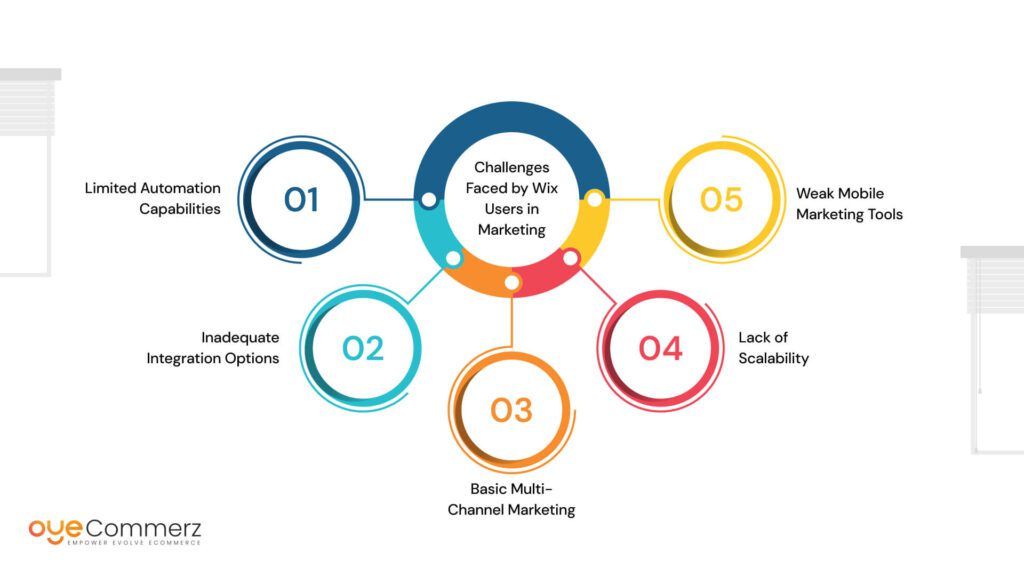
Wix is widely known for its simplicity and user-friendly interface, but when it comes to marketing tools, many users face significant hurdles that can hinder business growth. Let’s dive into the key challenges Wix users encounter and how these limitations compare with Shopify marketing features vs Wix.
1. Limited Automation Capabilities
Wix offers basic automation features like email campaigns, but it lacks the advanced personalization and segmentation options that are vital for modern e-commerce success. For example:
- Automated abandoned cart recovery is less robust.
- Email sequences are limited in customization.
- Personalization based on customer behavior is almost nonexistent.
In contrast, Shopify’s automation tools allow for hyper-personalized experiences, leading to higher engagement and conversion rates.
2. Inadequate Integration Options
Wix has a smaller integration ecosystem, limiting businesses in areas like CRM, advanced analytics, and third-party marketing tools. This creates friction when trying to:
- Sync customer data across platforms.
- Implement advanced advertising strategies.
- Analyze cross-channel performance effectively.
Shopify, with its vast app store and integration ecosystem, makes it easier for businesses to connect with tools like HubSpot, Google Analytics, and Klaviyo seamlessly.
3. Basic Multi-Channel Marketing
Wix supports social media and some ad integrations, but the functionality is minimal:
- Limited campaign tracking for platforms like Google Ads and Facebook.
- No built-in support for advanced features like dynamic ads or retargeting.
Shopify, on the other hand, enables businesses to run and monitor multi-channel campaigns directly from the dashboard. Its tools also include retargeting options and dynamic product ads, which are crucial for customer acquisition and retention.
4. Lack of Scalability
As businesses grow, they often outpace Wix’s capabilities:
- Managing large product inventories becomes cumbersome.
- Handling higher traffic volumes can result in slower site performance.
- Limited advanced marketing features restrict growth potential.
Shopify provides scalable solutions, from enterprise-level inventory management to performance optimization for high-traffic sites.
5. Weak Mobile Marketing Tools
In today’s mobile-first world, Wix falls short with tools for mobile campaigns:
- Mobile-specific ads are harder to manage.
- Optimizing mobile user experiences is less flexible.
Shopify’s mobile marketing tools, including push notifications and app integrations, ensure businesses stay connected with on-the-go customers.
Introducing Shopify’s Marketing Suite
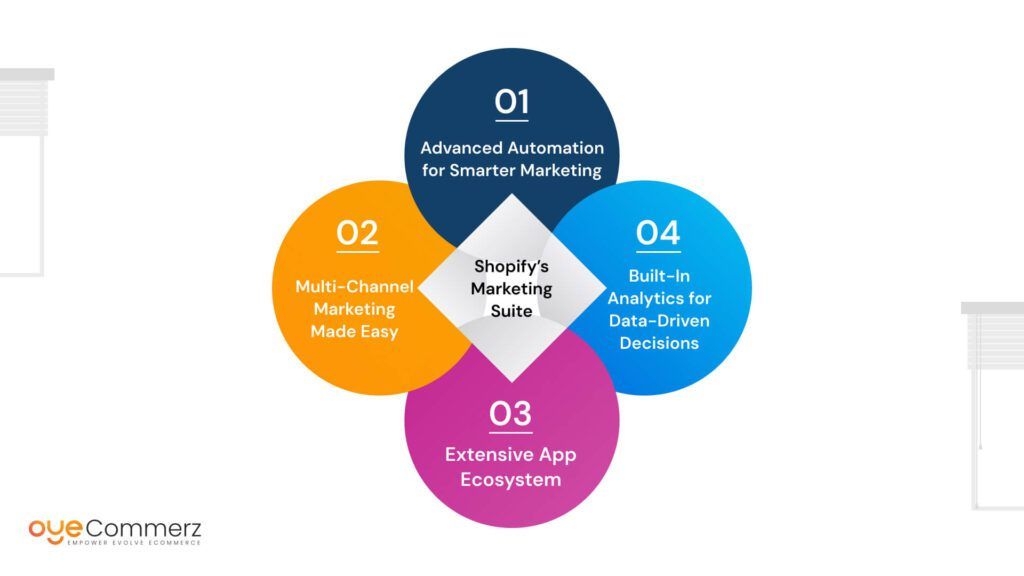
Shopify’s marketing suite is designed to tackle the challenges faced by Wix users and provide businesses with tools that grow alongside them. Unlike Wix’s basic offerings, Shopify combines advanced automation, seamless integrations, and scalable features to deliver a comprehensive solution for marketing needs. Let’s break down what makes Shopify’s marketing suite a superior choice in the battle of Shopify marketing features vs Wix.
1. Advanced Automation for Smarter Marketing
Shopify’s marketing suite allows businesses to automate tasks that would otherwise require hours of manual work:
- Abandoned Cart Recovery: Shopify automatically sends personalized emails to customers who leave items in their carts, increasing conversion rates.
- Email Marketing Campaigns: Create and schedule multi-step email sequences tailored to customer behavior.
- Dynamic Recommendations: Display products based on browsing history or purchase patterns.
These automation features not only save time but also improve the customer experience, resulting in higher engagement and sales.
2. Multi-Channel Marketing Made Easy
Shopify excels at multi-channel marketing, enabling businesses to manage campaigns across platforms like Google, Facebook, Instagram, and TikTok from a single dashboard:
- Dynamic Product Ads: Automatically showcase products tailored to user interests on social platforms.
- Campaign Tracking: Monitor performance metrics for all channels in one place.
- Google Smart Shopping: Use Shopify to integrate directly with Google Ads for targeted campaigns.
This unified approach eliminates the need for multiple tools, making campaign management efficient and cost-effective.
3. Extensive App Ecosystem
Shopify’s app store offers thousands of apps that enhance its marketing suite:
- Upselling & Cross-Selling Apps: Boost average order value by suggesting complementary products.
- SEO Optimization Tools: Improve site visibility with advanced keyword tracking and content recommendations.
- Cart Recovery Tools: Go beyond basic email recovery with push notifications and SMS follow-ups.
The ability to customize the platform with these apps ensures businesses have the exact tools they need for growth.
4. Built-In Analytics for Data-Driven Decisions
Shopify’s analytics dashboard provides deep insights into customer behavior, sales trends, and marketing performance:
- Customer Segmentation: Identify and target specific customer groups with tailored campaigns.
- Sales Reports: Understand what products and strategies are driving revenue.
- Campaign Performance Metrics: Evaluate the ROI of marketing efforts across all channels.
This level of detail empowers businesses to refine their strategies and make informed decisions.
Technical Advantages of Shopify for Marketing
When comparing Shopify marketing features vs Wix, Shopify’s technical edge is one of its most significant advantages. From robust integrations to scalable capabilities, Shopify’s infrastructure supports businesses in executing advanced marketing strategies effortlessly.
Robust Integration Ecosystem
Shopify’s integration ecosystem is built for flexibility and efficiency, allowing businesses to connect their store with leading third-party tools and platforms. These integrations empower businesses to automate processes, analyze performance, and optimize campaigns.
- Easy CRM Integration: Shopify connects seamlessly with CRM tools like HubSpot to manage customer relationships and track sales pipelines.
- Email Marketing Platforms: Tools like Klaviyo integrate with Shopify for personalized email campaigns.
- Analytics Tools: Integrate with Google Analytics to track performance metrics and refine strategies.
Shopify Apps for Enhanced Marketing
Shopify’s App Store offers over 6,000 applications designed to enhance marketing efforts. These apps enable businesses to customize their approach and maximize ROI.
- Upselling and Cross-Selling Apps: Encourage higher-order values by suggesting complementary products.
- SEO Optimization Tools: Improve search rankings with tools that analyze keywords, meta tags, and site speed.
Cart Recovery Apps: Recover lost sales with SMS, push notifications, and email reminders.
Scalable E-commerce Capabilities
Shopify provides a scalable foundation that grows with your business, a critical advantage over Wix’s more static framework.
- Advanced Discount Rules: Set dynamic discounts based on user behavior, purchase quantity, or order value.
- Multi-Channel Selling: Seamlessly sell across platforms like Amazon, eBay, and Facebook Marketplace.
- Dynamic Product Recommendations: Use AI to suggest products based on customer preferences.
Additionally, Shopify’s built-in tools support Google and Facebook Ads campaigns, making it easier to reach targeted audiences without additional software.
Mobile Marketing Advantages
Shopify is designed with mobile-first marketing in mind, ensuring your campaigns perform well on mobile devices. It offers:
- Mobile Push Notifications: Engage customers with timely updates and offers.
- Custom Mobile Apps: Shopify allows businesses to create dedicated mobile apps for better customer experiences.
- App Store Management: Manage your store on the go with Shopify’s mobile app.
Why Shopify is a Better Fit for US-Based Businesses
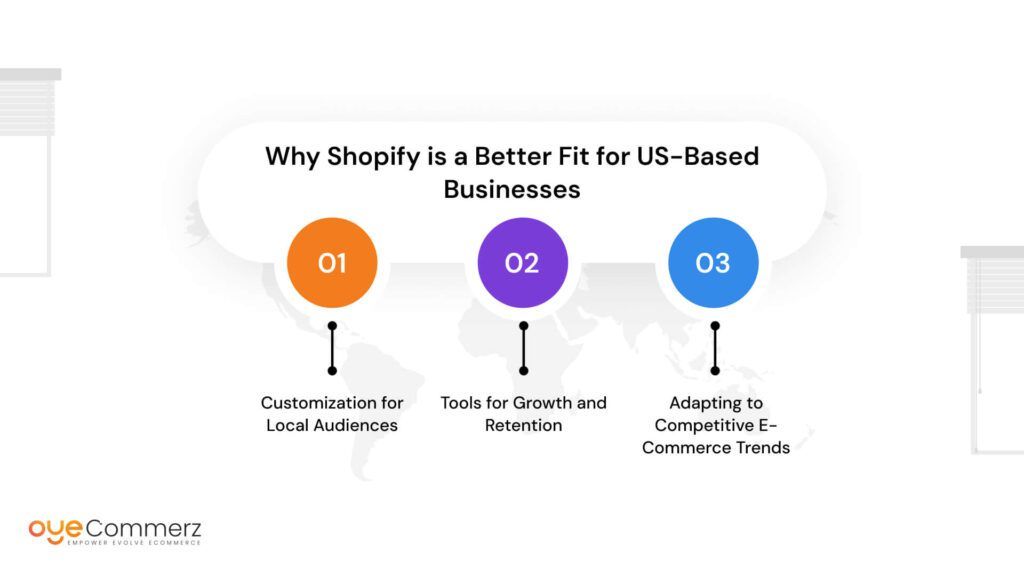
Operating in the United States, one of the world’s most competitive e-commerce markets, demands more than just a functional website. Businesses need tools that not only cater to local preferences but also scale with the rapidly evolving demands of consumers. Here’s why Shopify stands out when comparing Shopify marketing features vs Wix for US-based businesses.
Customization for Local Audiences
The US market is diverse, with distinct consumer behavior across regions, demographics, and industries. Shopify provides unparalleled customization options to tailor marketing efforts for specific audiences.
- Localized Campaigns: Shopify allows you to customize campaigns with region-specific discounts, promotions, and content, ensuring your messaging resonates with local audiences.
- Flexible Payment Gateways: Support for various payment gateways like PayPal, Stripe, and local wallets caters to the diverse preferences of US shoppers.
- Language and Currency Options: Even within the US, offering multiple language support (e.g., Spanish) and pricing in local taxes can enhance user experience and trust.
Tools for Growth and Retention
Shopify equips businesses with tools to attract new customers and retain existing ones—a crucial factor in the highly competitive US market.
- Subscription Programs:
- Build recurring revenue streams with Shopify’s built-in subscription support.
- Offer subscription boxes or repeat deliveries to loyal customers, increasing lifetime value.
- Customer Loyalty Programs:
- Implement reward systems using Shopify apps like Smile.io.
- Encourage repeat purchases with points-based incentives or exclusive member discounts.
- Data-Driven Retention Strategies:
- Leverage Shopify’s advanced analytics to segment your audience.
- Run targeted email campaigns or SMS notifications to re-engage inactive customers.
Why It Matters: In a market where customer acquisition costs are rising, retaining customers is more cost-effective and profitable. Shopify’s tools make it easy to nurture relationships, something Wix struggles to match with its limited ecosystem.
Adapting to Competitive E-Commerce Trends
The US market is shaped by constant innovation, and Shopify’s platform evolves to meet these needs:
- Social Commerce: Sell directly through Instagram, TikTok, and Facebook, leveraging Shopify’s integrations.
- Omnichannel Presence: Manage inventory, sales, and promotions across online stores, brick-and-mortar shops, and marketplaces like Amazon—all from one dashboard.
- AI and Personalization: Shopify apps harness AI to predict customer preferences and recommend products dynamically.
By addressing these unique needs of US-based businesses, Shopify solidifies its position as a platform that not only meets current demands but also anticipates future trends. Next, we’ll guide you on how to transition seamlessly from Wix to Shopify, ensuring you take full advantage of Shopify’s powerful marketing features.
How to Transition from Wix to Shopify
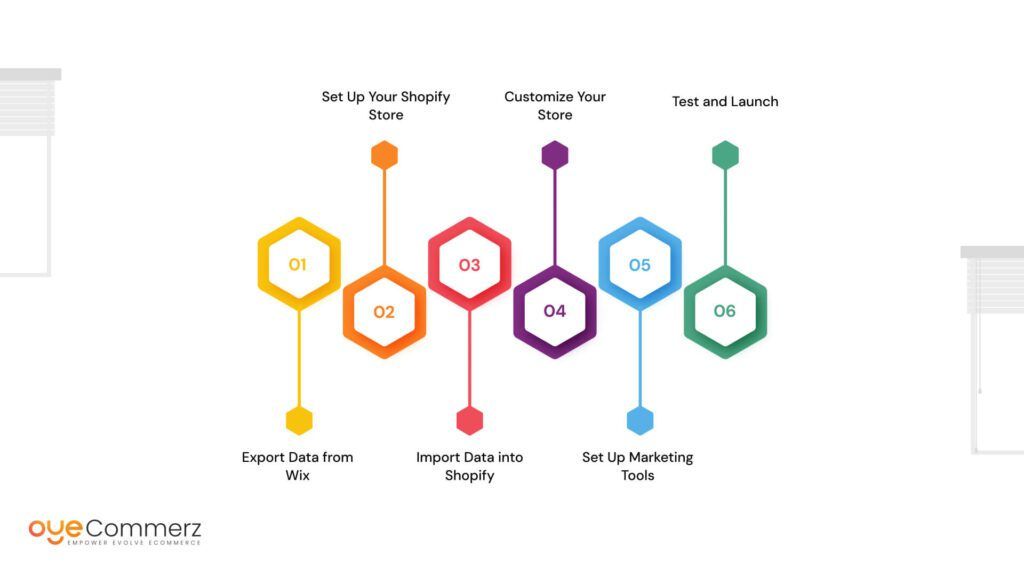
Switching platforms may seem daunting, but Shopify’s tools and resources make the process straightforward, ensuring your business doesn’t miss a beat during the transition. For those frustrated with Wix’s limitations, moving to Shopify unlocks a world of marketing possibilities. Let’s explore how to migrate and set up for success while making the most of Shopify marketing features vs Wix.
Steps to Migrate
Shopify offers dedicated migration tools and guides to help businesses transfer their data, content, and store setup seamlessly.
- Export Data from Wix:
- Download your product, customer, and order data as CSV files.
- Collect any additional assets like images and descriptions.
- Set Up Your Shopify Store:
- Choose a theme that matches your brand’s aesthetic.
- Configure essential settings like currency, taxes, and shipping options.
- Import Data into Shopify:
- Use Shopify’s Import Store app or manually upload data via CSV files.
- Ensure all products, categories, and images are correctly mapped.
- Customize Your Store:
- Add branding elements like logos, banners, and colors.
- Configure navigation menus and product categories for a user-friendly experience.
- Set Up Marketing Tools:
- Enable Shopify’s built-in marketing tools, such as abandoned cart emails and discount codes.
- Integrate third-party apps for email campaigns, SEO, and social media marketing.
- Test and Launch:
- Preview your store to ensure everything is working correctly.
- Run a soft launch to gather feedback before fully transitioning.
Tips for Success
Maximizing Shopify’s marketing tools post-migration is crucial to achieving your business goals. Here are some actionable tips:
- Leverage Shopify’s Marketing Suite:
- Set up automated email campaigns using built-in tools or apps like Klaviyo.
- Enable cart recovery notifications to capture lost sales.
- Integrate Advanced Analytics:
- Connect Google Analytics and Shopify’s dashboard for deeper insights.
- Use these insights to refine your campaigns and product listings.
- Focus on SEO:
- Use apps like Plug in SEO to improve your search rankings.
- Optimize product descriptions, images, and metadata for visibility.
- Set Up Omni Channel Selling:
- Activate Shopify integrations for selling on Amazon, Facebook, and Instagram.
- Manage inventory and promotions across all channels from one platform.
- Automate Workflows:
- Use Shopify Flow (for higher-tier plans) to automate repetitive tasks like inventory alerts or email segmentation.
- Invest in Mobile Optimization:
- Ensure your store is mobile-friendly with responsive themes.
- Use Shopify’s mobile marketing tools to target customers on the go.
Why Transitioning to Shopify Is Worth It
Migrating from Wix to Shopify isn’t just a technical change; it’s a strategic upgrade. With Shopify’s robust marketing suite, businesses can:
- Automate time-consuming processes.
- Scale effortlessly as customer demand grows.
- Compete effectively in a crowded e-commerce landscape.
By addressing these unique needs of US-based businesses, Shopify solidifies its position as a platform that not only meets current demands but also anticipates future trends. Next, we’ll guide you on how to transition seamlessly from Wix to Shopify, ensuring you take full advantage of Shopify’s powerful marketing features.
Scale Your Business with OyeCommerz
Are you ready to take your e-commerce business to the next level? With OyeCommerz, our Shopify-powered solution, you get more than just a platform—you get a partner dedicated to your success.
Why Choose OyeCommerz?
- Seamless Migration: Our team ensures a smooth transition from Wix to Shopify, with zero data loss and minimal downtime.
- Custom Solutions: Tailor your store with advanced Shopify apps and features that align with your business goals.
- Expert Support: From onboarding to post-launch, our experts guide you every step of the way.
- End-to-End Scalability: Whether you’re growing locally or targeting global markets, OyeCommerz ensures your store is ready for any challenge.
What’s Next?
- Try Shopify Risk-Free: Start with a free trial and explore the full potential of Shopify’s marketing tools.
- Book a Consultation: Let our experts analyze your business needs and craft a tailored growth strategy.
- Launch with Confidence: From design to marketing, OyeCommerz helps you create a store that’s optimized for conversions and ready to scale.
Start Today
Don’t let limited tools hold your business back. Transition to Shopify with OyeCommerz and discover the difference a robust marketing suite can make. Click below to get started:
Schedule Your Free Consultation
Elevate your e-commerce journey with OyeCommerz and watch your business grow like never before!
Contact to Migrate your Site to Shopify Now
Conclusion
Wix’s basic marketing tools may work for starters, but they often fall short for businesses aiming to scale and thrive in competitive markets. In contrast, Shopify’s robust marketing suite, seamless integrations, and scalable features make it a clear winner.
If you’re ready to overcome Wix’s limitations and unlock your business’s full potential, try Shopify today with a free trial or book a consultation to get started!

